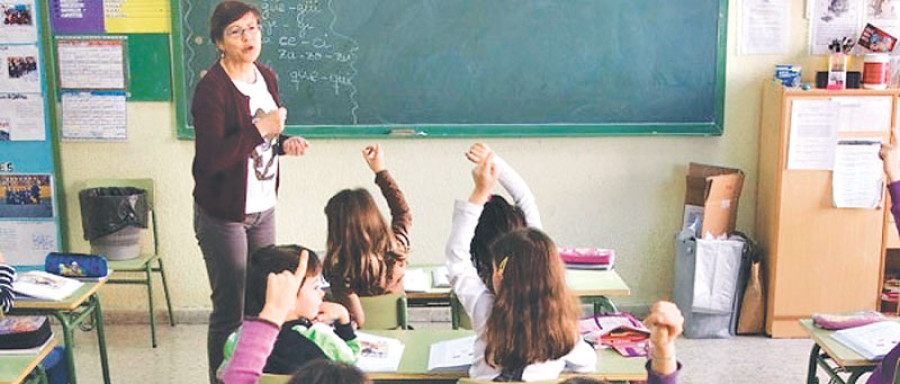Opinion
A new pedagogy
On the very first day of an academic year, teachers walk into classrooms full of students with diverse attributes. More often than not, attributional diversity among students of the same grade far outnumber their similarities. It is not unusual for teachers to face students from varied linguistic, social, religious, cultural and national backgrounds.
Dronashish Neupane
On the very first day of an academic year, teachers walk into classrooms full of students with diverse attributes. More often than not, attributional diversity among students of the same grade far outnumber their similarities. It is not unusual for teachers to face students from varied linguistic, social, religious, cultural and national backgrounds. Neither is it unusual for to have in a classroom students with different physical and intellectual abilities. Teaching such a varied group of students in a way in which each student successfully meets the standards set forth by the curriculum is in itself quite exacting. Moreover, a more difficult challenge lies in trying to engage all those students with variegated grade levels and learning styles, needs and interests without compromising the learning objectives of the curriculum. A differentiated approach in pedagogy—as opposed to a one-size-fits-all approach—could help teachers fulfil those objectives more efficiently and effectively.
Tailored assistance
Differentiated instruction, according to Carol Ann Tomlinson, consists of efforts of teachers to respond to variance among learners in the classroom. Author of The Differentiated Classroom, Ann Tomlinson argues that differentiated instruction is a situation where a teacher reaches out to an individual or a small group to vary his or her teaching in order to create the best learning experience possible. In keeping with this understanding, the genesis of differentiation is the identification of the interests, preferred learning styles and current level of knowledge and skills of the students. Considering the results of standardised tests and their past grades would only give an incomplete picture of any student’s abilities and modes of learning.
Howard Gardner, an American development psychologist known for his theory of multiple intelligence, has stated that “the biggest mistake of past centuries in teaching has been to treat all children as if they were variants of the same individual and thus to feel justified in teaching them the same subjects in the same ways.” Understanding who the students are and what they already know is a prerequisite for a differentiated classroom as it helps in offering multiple avenues and modes of learning. Teacher observation, questioning, focused talk and discussion, feedback from previous teachers, sample of their work other than test papers are some of the many methods in which a teacher can know his or her students. This needs to be done right at the start of an academic year.
In addition to the methods mentioned above, a differentiated learning environment helps pave way for a more effective teaching-learning process. The setting and infrastructure of the classroom vitally determine the efficacy of differentiation and providing children with multiple choices for their learning. There is no blueprint as to how a perfectly differentiated classroom looks like, but the least that could be said is that it is definitely not a classroom with only a white board and students seated in a theatre-like setting throughout the year. A common misconception, however, is thinking of a differentiated classroom as being fully equipped with latest Information Communications and Technology (ICT) equipment such as projectors and individual laptops.
Learning by doing
Although the significance of the ICT equipment is undeniable, differentiation sans the equipment can still be initiated with classroom management strategies. Provided there is enough space, a teacher can make sure that there are places in the classroom to work quietly and without distraction, as well as places that invite student collaboration. Additionally, training children early in the year to arrange the furniture according to at least two-three floor plans can facilitate group learning even if the class size is relatively small. Small-scale resource centers can also be created within the classroom settings, for instance a mini library with open shelving, allowing students access to relevant books and hand-outs. Likewise, a computer centre with pertinent audiovisual materials for visual and auditory learners as well as a Socratic centre for social/interpersonal learners where small group discussion of the concepts being taught are be held could also be set up.
With due considerations given to identifying different knowledge levels, learning styles and classroom settings, the final task—and perhaps the one where the teacher needs to be especially careful—is the delivery of the concepts intended for students to learn and the assessment of their final projects. This again demands flexibility from teachers as opposed to a hard and fast approach, where students have no choice with regard to the contents they study and ways of exhibiting their understanding through final projects.
By way of example, if the curriculum requires students to understand the use of figurative language in literature, the content need not be only a particular book. A wide variety of texts from different genres could be offered, with the students choosing to read whichever they are attuned to. As long as the objective of this particular unit in question is not writing proficiency, the teacher can offer various gateways for students to exhibit their understanding of figurative language based on their strengths. Such gateways could be written presentations, oral presentations, role playing, lists, charts or even songs and rap music. What is to be avoided is the watering down of the curriculum for struggling students and assigning more tasks to those who excel. Keeping everyone on the same page while assigning tasks of various difficulty levels of the same concept and curriculum is what is expected of a teacher in a differentiated classroom.
Dronashish Neupane is a faculty member at Premier international IB/PYP World School




 10.12°C Kathmandu
10.12°C Kathmandu











